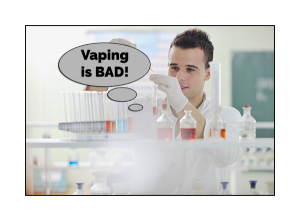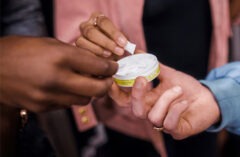Table of Contents
How to Spot Junk e-Cigarette Science in Four Easy Steps
The best way for vapers to fight misinformation is through education. Learn how to spot and defeat pseudo-science, aka, junk science.
Science journalism is dying. As newspapers find their revenue drying up in an increasingly online-only world, science journalists are being asked to generate more ‘clicks’ and in less time. The best way to do this is by cutting corners and sensationalizing the mundane. Science journalists, especially when it comes to e-cigarette research, are increasingly either just copying+pasting the press release or else parroting their biases without actually reading the research.
This may be excusable in the realm of celebrity gossip or showbiz news, but for people tasked with protecting and informing the public on matters relating to their health… it’s worse than disingenuous… it’s unethical.
Worse still, the ‘peer-review’ process for scientific journals is far from water-tight. While we tend to imagine that a peer-reviewed piece of research has been thoroughly combed for errors, in reality, it is often read by one friendly colleague who may or may not be an expert in the thing being studied. Even if they spot errors and make suggestions these are often not acted on and the study is published regardless. This problem is amplified by the fact that scientists are incentivized to publish often rather than to publish well… and they can expect more funding if their findings happen to coincide with the funder’s beliefs.
What does this mean for the average reader who wants to learn about the health benefits of e-cigarettes? It means that they simply can’t blindly trust the headlines to get an accurate sense of what the science really says on the subject. To do that, readers are going to have to learn how to spot bad science for themselves. We’ve put together a list of how you can check whether a vaping study is worth paying attention to.
1. Does the conclusion align with the evidence?
Science doesn’t tell us whether something is “good” or “bad”. Science simply gives us a set of results and it’s up to scientists to interpret these results. However, sometimes scientists distort or misrepresent their findings (intentionally or otherwise) in order to present their study as ‘newsworthy’ or else to make their findings fit with their biases.
The infamous #SanDiegoGate vaping study late in 2015 was a prime example of this. In the San Diego e-cigarette study, human cells were doused in e-cigarette vapor and measured for signs of damage. After eight weeks, the researchers were able to find some signs of damage, leading one scientist to conclude, publicly, that e-cigarette vapor might be “no safer than smoking tobacco”. A statement that was printed in national newspapers around the world.
But the scientists didn’t mention their other crucial findings. They also tested humans cells by exposing them to cigarette smoke — but their research was cut short because all of the human cells exposed to cigarette smoke died in under twenty-four hours. It doesn’t take a scientist to see that what the research was actually suggesting is that cigarette smoke is far more damaging to human cells (in a laboratory setting) than vaping… Yet this last point went largely unreported.
Fortunately, the error was spotted. Adam Jacobs called out the Daily Telegraph’s flawed coverage of the story as the “most dangerous, irresponsible, and ill-informed piece of health journalism of 2015.” The scientists went on record issuing a correction of sorts. But, as always, the correction wasn’t promoted as widely as the original story, and it’s likely that many members of the public saw the flawed original and not the corrected update.
2. Double-check any figures involved
 Did you know that apple seeds contain cyanide? Many seeds, stones, and pips contain amygdalin, a chemical which decomposes into the deadly poison cyanide when it comes into contact with saliva. But of course, the amount of cyanide in apple seeds is so low that it’s extremely unlikely that you’d ever be able to poison yourself just by eating apples. The point I’m making is that toxic chemicals are all around us… in the food we eat, the air we breathe, even in our own bloodstream. These toxic chemicals only become a problem once they become present in a certain amount.
Did you know that apple seeds contain cyanide? Many seeds, stones, and pips contain amygdalin, a chemical which decomposes into the deadly poison cyanide when it comes into contact with saliva. But of course, the amount of cyanide in apple seeds is so low that it’s extremely unlikely that you’d ever be able to poison yourself just by eating apples. The point I’m making is that toxic chemicals are all around us… in the food we eat, the air we breathe, even in our own bloodstream. These toxic chemicals only become a problem once they become present in a certain amount.
When scientists find a toxic substance in e-cigarette vapor, the next important question is to ask “how much?” For example, much fuss was made of a recent Harvard study which found diacetyl in some e-cigarette flavorings. Diacetyl occurs naturally in apples(!), beans and butter and is used as a flavoring because it has a distinctive buttery taste. But it is a controversial chemical because it is associated with an outbreak of ‘popcorn lung’ in a number of factory workers.
The media jumped on this connection as ‘proof’ that e-cigarettes must cause popcorn lung. But the real question is how much diacetyl is present in e-cigarette vapor, and is it enough to pose a health risk? Dr. Michael Siegel also measured the amount of diacetyl in e-cigarettes, but then he compared this to the amount of diacetyl which is present tobacco cigarettes. He found that the daily exposure to diacetyl from smoking was 750 times higher than the daily exposure to diacetyl from vaping. Seeing as no smoker (that we know of) has ever contracted popcorn lung, it looks next to impossible that you’d get popcorn lung by vaping.
As an aside, it’s also important to note that diacetyl is an optional ingredient in e-cigarette flavorings and that most reputable manufacturers do not include the controversial chemical in their e-liquids.
3. Check the terms (and pay close attention to statistics)
What is a “smoker?” Is it someone who smokes a pack a day, someone who smokes at parties, or someone who has ever tried a cigarette? In everyday conversations, we have a good idea what we mean when we say something like “smoker” or “vaper” or “quit”. But in science, terms like this have to have much more precise meanings… and sometimes what a scientist means by a word won’t actually correspond with what a reader might expect a word to mean.
In the recent widely reported study on vaping in Hawaii, scientists ‘found’ that young people who used e-cigarettes were three times more likely to become smokers. Here’s the catch: they didn’t properly differentiate between the children who tried a cigarette just once and those who were frequent smokers. In other words, some of the children in the study had in the past two years, taken just one puff of an e-cigarette and later on just one puff of an actual cigarette. This doesn’t tell us that children who vape are more likely to smoke… it tells us that experimental children are more likely to try new things.
The important statistic to watch is the number of children who frequently vape and how many of those went on to frequently smoke — and the study showed that vaping was insignificant as a predictor for smoking (at both points in the study 8% of young people vaped and 4% smoked). Commenting on the study, Professor Linda Bauld points out that “This study does not provide evidence that e-cigarettes are a gateway to regular smoking in teenagers”.
You don’t have to be an expert to see that e-cigarettes do not cause people to take up smoking. If they did, we would expect to see more young people smoking now than in the past… but that simply hasn’t happened. In fact, since vaping has become popular, smoking rates in young people have fallen to the lowest levels on record.
4. Does the study reflect real-world vaping?
If you take something and use it in a way that it is not intended to be used, then you will probably run into danger somewhere along the line. Imagine you take a toaster, turn it up to the max, incinerate a slice of bread then run lab analysis on the blackened remains. You might well find that your burnt toast isn’t particularly healthy… but does this allow you to say that all toasters are dangerous?
This is what scientists did in perhaps the most misleading study in recent memory — the infamous ‘formaldehyde’ study. If you turn on an e-cigarette to the highest possible heat and don’t fill it up with e-juice… then you get what vapers know and hate: a dry hit. No one intentionally vapes a dry hit, it’s a mistake you make once then never again. Sadly, some scientists were unaware of this, ran analysis of a ‘dry hit’ and found that it contains formaldehyde.
Again, it didn’t take long for eagle-eyed observers to find that e-cigarettes do not produce significant amounts of formaldehyde in real-world conditions. But by this point, the damage was already done and the misconception that e-cigarettes contain formaldehyde was out in the public consciousness.
Flawed vaping studies will continue to be published blindly by the newspapers. It’s up to us to educate ourselves on the science.
The bottom line is you can’t trust a study just because it is a ‘study’ and you certainly can’t trust media reporting on a given study. Read the study for yourself. If you spot good science, you can trust the results, if not, discard them.
By Pascal Culverhouse of the Electric Tobacconist





